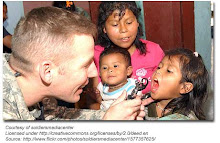Two women who I see in my gym's locker room finally convinced me to go with them to the Zumba class. "But I am too uncoordinated!" I protested. "Don't worry," one responded. "Just do whatever you can."
So I went, finally figured out after almost an hour how to swing my arms, legs and hips to somewhat resemble what the instructor was doing, sweated as if I had run a race in the Sahara desert and had fun. But I woke up the next morning wondering why my arms ached and my feet were giving forth with little yelps of pain.
I flashed back to the gym again and the advice from friends: "You have to wear lighter shoes, not your running shoes. They won't allow you to pivot easily. Be careful of your knees on some of the squats. Warm up your arms and stretch before taking the class. And if it hurts, stop."
None of this information came from the instructor and anyway, the music was so loud (half the class wore earplugs) that I could not have heard her advice had she given any. I went back to the class because it was fun and, after the proper precautions, I no longer hurt afterwards. But being on the verge of injury was hardly unique.
Scores of articles have been written on the hazards of exercise classes of all types. Not because the techniques, moves, positions, and pace are themselves hazardous, but because the participants have different body types, levels of stamina, histories of past injuries and/or fragile backs, knees and necks. Even if warnings and advice are given out at the beginning of an exercise to "go at your own pace " or "don't do this if you have problems with your back, knees, etc.," some members of the class may realize they have these problems only after they experience pain or injury.
Maybe someday gyms and other facilities giving classes will first administer body scans so that areas of orthopedic and muscle vulnerabilities will be noted, and people told which exercise classes to take or which to avoid. But now, unless you have been told by a physical therapist or a personal trainer to be careful of physical activities because of the risk of injury, there really is no way of assessing the safety of group activities, be they folk dancing or kickboxing. On the other hand, you don't want to be restricted to sitting in a chair and waving your arms around.
You can do a couple of things to help decide whether the exercise class will be more pleasure than pain. Watch the class and speak to the instructor before taking it. For example, you might want to take a yoga class, but your back is rather dicey and you are not sure how good your knees are. Some of the moves will be excellent for these problems, but others might exacerbate them. If, after seeing the class, you are concerned that some of the positions might be injurious, go to the instructor afterwards and ask for advice.
If a class in which you are considering participation is crowded, and there is no one (the instructor or an assistant) to walk around to check posture and position, consider looking for a smaller, more personalized class in which you will be assisted and avoid doing something that might injure you. And if the instructor simply tells you to do what you feel uncomfortable doing, look for something else. After all, if you are not familiar with the moves, how will you know what to avoid until it is too late? (Of course, the downside of this is the teacher stopping the class to help you -- usually me -- put legs and arms in the right position with everyone patiently waiting to get on with the next move.)
Also consider your stamina, balance and flexibility. If you are starting out on an exercise routine, don't go to a class that will make you out of breath and even dizzy in the first 10 minutes. Wait until you have built up some endurance on exercise machines, perhaps under the guidance of a trainer.
Take beginner classes and note which moves are difficult, such as standing on one foot or reaching your toes when sitting on the floor. Ask the instructor for suggestions of what you can do outside the class to make the moves or positions easier.
Don't be afraid to walk out of class that doesn't not feel right for your body. And if you are the competitive sort, don't allow this trait to make you stick with something that is wrong for your body or push your endurance when you feel dizzy, are out of breath or hurt a lot.
The final argument for taking or avoiding a class is: Are you having fun? Do you enjoy what you are doing, or are you watching the clock?
Unlike solitary exercise on a machine or weight lifting, taking classes often makes going to a health club a social event. You get to know the other participants, develop friendships that travel beyond the gym or, at the very least, you can complain together in the locker room after the class.
For more by Judith J. Wurtman, Ph.D., click here.
For more on fitness and exercise, click here.
Follow Judith J. Wurtman, PhD on Twitter: www.twitter.com/stopmed_wt_gain
FOLLOW HEALTH AND FITNESS
Source: www.huffingtonpost.com
 SPECIAL FROM Next Avenue
SPECIAL FROM Next Avenue